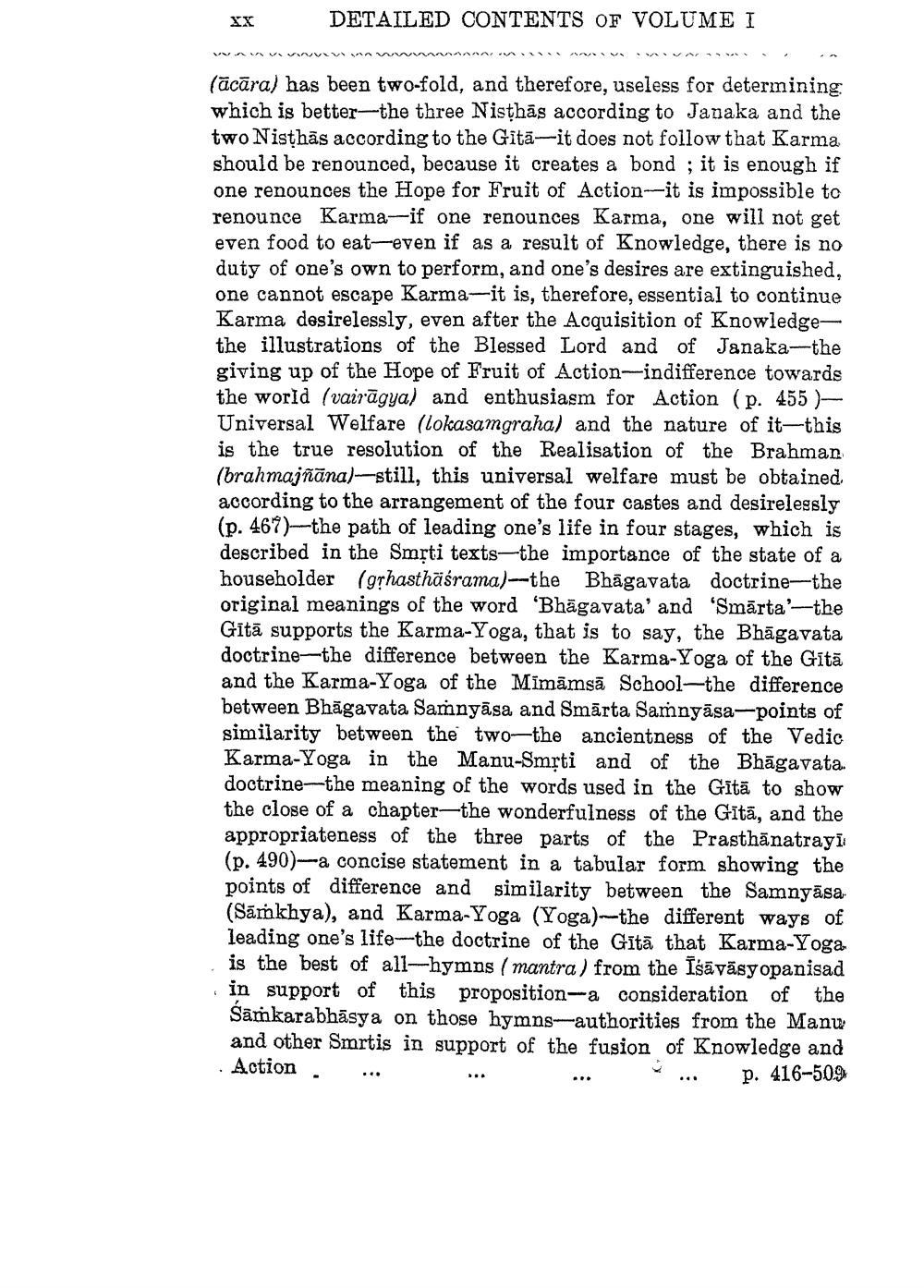________________
xx
DETAILED CONTENTS OF VOLUME I
(ācāra) has been two-fold, and therefore, useless for determining which is better--the three Nisthās according to Janaka and the two Nisthās according to the Gitā-it does not follow that Karma should be renounced, because it creates a bond ; it is enough if one renounces the Hope for Fruit of Action--it is impossible to renounce Karma--if one renounces Karma, one will not get even food to eat-even if as a result of Knowledge, there is no duty of one's own to perform, and one's desires are extinguished, one cannot escape Karma-it is, therefore, essential to continue Karma desirelessly, even after the Acquisition of Knowledgethe illustrations of the Blessed Lord and of Janaka-the giving up of the Hope of Fruit of Action-indifference towards the world (vairāgya) and enthusiasm for Action (p. 455 )Universal Welfare (lokasamgraha) and the nature of it-this is the true resolution of the Realisation of the Brahman (brahmajñāna)-still, this universal welfare must be obtained according to the arrangement of the four castes and desirelessly (p. 467)-the path of leading one's life in four stages, which is described in the Smrti texts—the importance of the state of a householder (grhasthāśrama)--the Bhagavata doctrine-the original meanings of the word 'Bhagavata' and 'Smārta'-the Gītā supports the Karma-Yoga, that is to say, the Bhagavata doctrine-the difference between the Karma-Yoga of the Gītā and the Karma-Yoga of the Mimāmsā School-the difference between Bhāgavata Samnyāsa and Smārta Samnyāsa-points of similarity between the two-the ancientness of the Vedic Karma-Yoga in the Manu-Smrti and of the Bhāgavata. doctrine-the meaning of the words used in the Gitä to show the close of a chapter-the wonderfulness of the Gitä, and the appropriateness of the three parts of the Prasthänatrayii (p. 490)--a concise statement in a tabular form showing the points of difference and similarity between the Samnyāsa (Sāṁkhya), and Karma-Yoga (Yoga)--the different ways of leading one's life-the doctrine of the Gītā that Karma-Yoga is the best of all-hymns ( mantra) from the Iśāvāsy opanisad in support of this proposition-a consideration of the Samkarabhāsya on those hymns-authorities from the Manu and other Smrtis in support of the fusion of Knowledge and • Action
... p. 416-509




